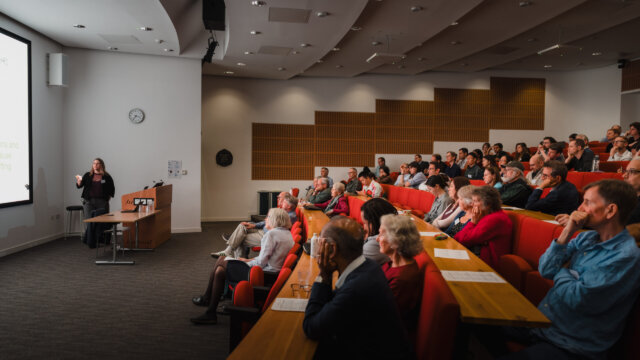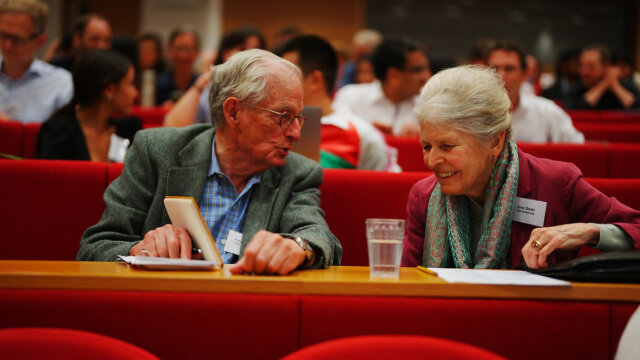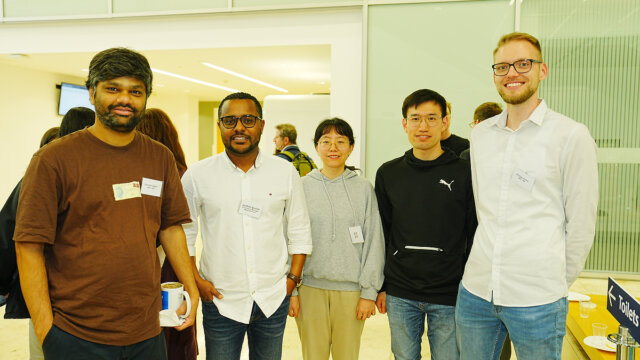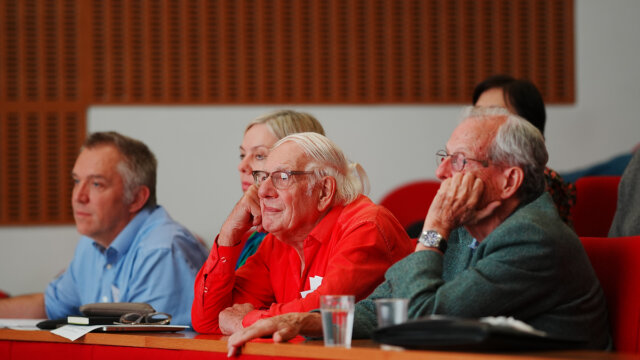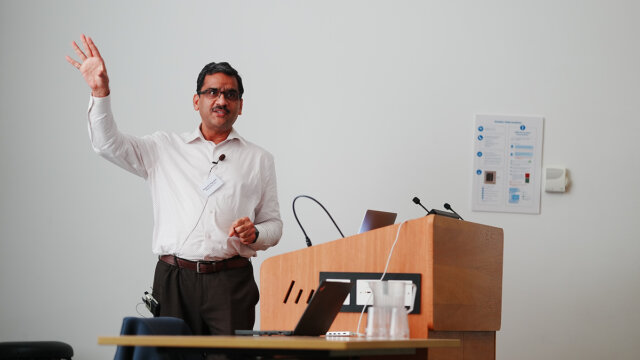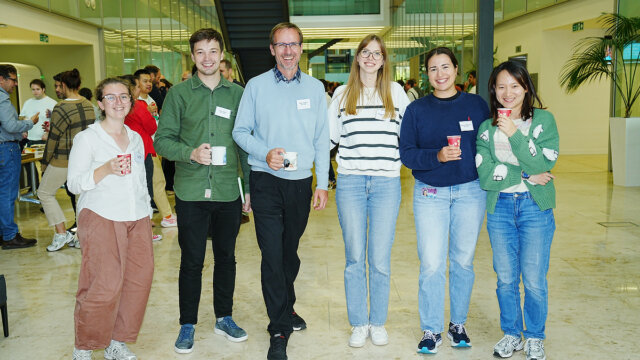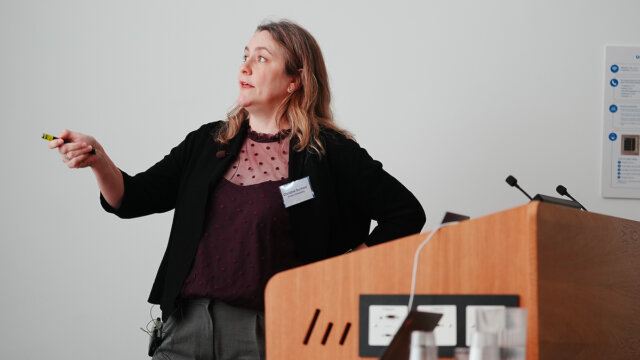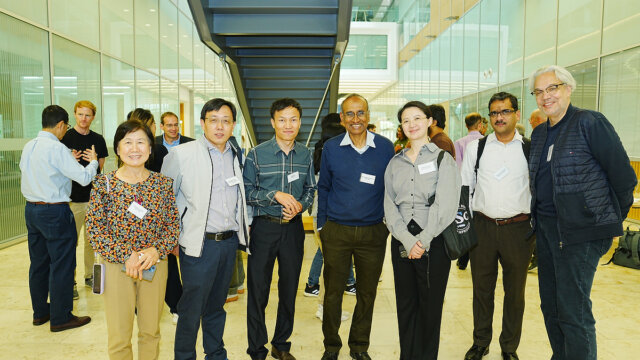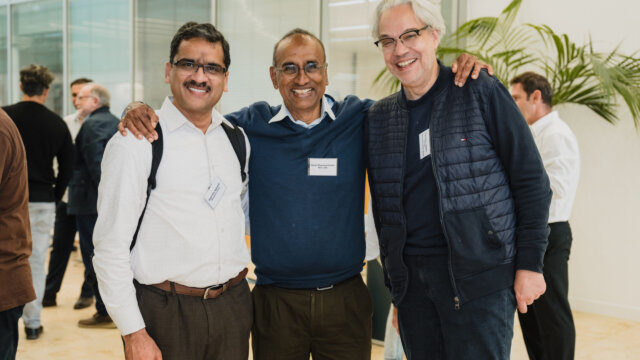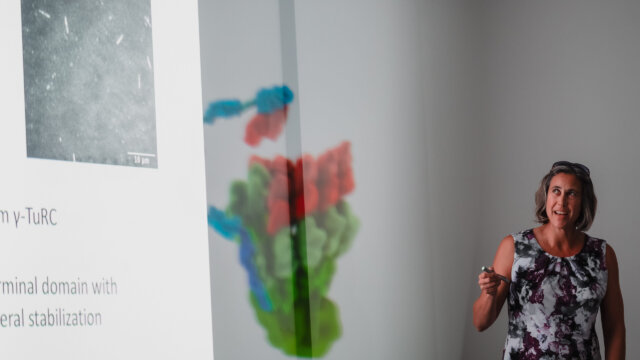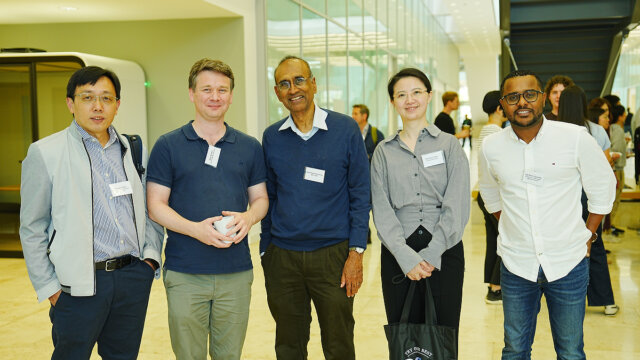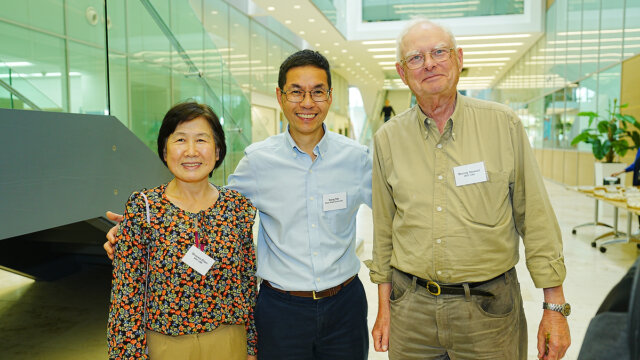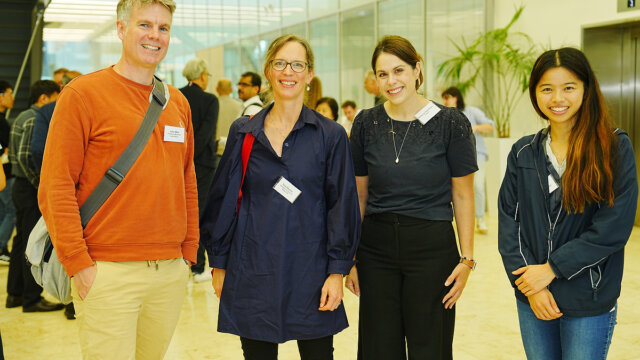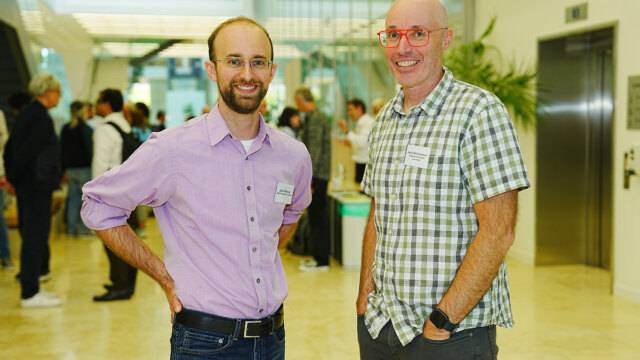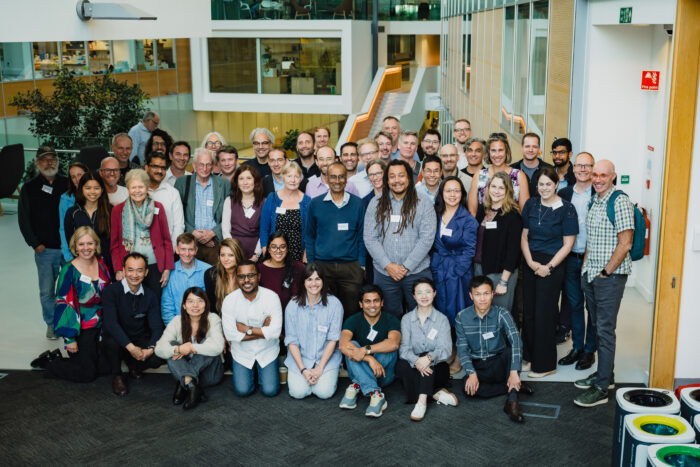
In September 2000, Venki Ramakrishnan’s group published two back-to-back papers in Nature describing X-ray crystal structures of the bacterial 30S ribosomal subunit. These were landmarks in structural biology that led to a revolution in our understanding of the ribosome, the action of antibiotics and the reading of the genetic code. The 30S structures were followed by 25 years of amazing ribosome discoveries at the LMB and resulted in Venki being one of three scientists awarded the Nobel Prize in Chemistry in 2009. To mark the 25th anniversary of these papers, the LMB was delighted to welcome back previous group members, collaborators and other colleagues, past and present, for a two-day symposium.
Mapping the paths of those who have worked in Venki’s group throughout the years, both at the LMB and in his previous lab at the University of Utah, results in a sprawling network which stretches across the globe. The enthusiasm with which alumni returned to the LMB in September is testament to the support and mentorship Venki has offered to generations of early-career researchers.
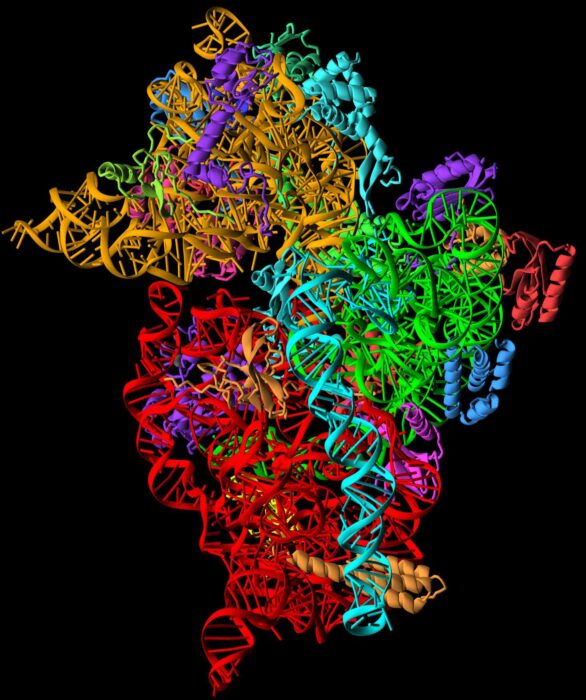
Speakers provided personal insights into their time working in Venki’s group, describing how the ambitious project to determine the 30S ribosome structure quickly became a dogged race to generate results before competitors. Those on the other side of the race shared their side of the tale, including how the competition sparked new insights when groups were spurred to unravel and explain conflicting details in early publications of the ribosome subunit. Contributors also discussed the later progression to studying the 70S ribosome structure, the evolution of techniques from X-ray crystallography to electron cryomicroscopy and how the work shaped Venki’s group more broadly.
A testament to the cultivation of scientific acumen in Venki’s group, many alumni have gone on to lead research groups investigating a diverse array of challenging biological questions. The symposium provided the opportunity to share a snapshot into their research, covering protein production and quality control to mitochondrial machines and RNA synthesis.
Several speakers regaled attendees with anecdotes from their times working with Venki, from the decision to relocate the group to the LMB in 1999 to being on hand to witness his response to being awarded the Nobel Prize. Many recalled the steadfast focus Venki had for tackling the structure of the ribosome, despite the seemingly insurmountable scale of the project in its early days. Venki’s encouragement to think big and choose large, challenging projects was a common theme throughout talks, which many alumni have taken to heart when shaping their own independent research groups. Several speakers also commented on the warmth with which Venki has championed colleagues and wider support staff across the LMB, making it clear that science is not a solo endeavour and that unexpected insights can be gained when working with new people.
LMB Group Leaders Andrew Carter and Lori Passmore, who helped organise the event, commented, “It was great to welcome so many alumni, collaborators and friends to the LMB to reminisce on old times and hear about all the amazing science they are doing now. We both joined the LMB to work in Venki’s group and are very proud to be part of such a fantastic community of researchers.”
Further references
Venki’s group page
2009 Chemistry Prize – Venki Ramakrishnan
Structure of the 30S ribosomal subunit. Wimberly, B. T., Brodersen, D. E., Clemons Jr., W. M., Morgan-Warren, R. J., Carter, A. P., Vonrhein, C., Hartsch, T. and Ramakrishnan, V. Nature
Functional insights from the structure of the 30S ribosomal subunit and its interactions with antibiotics. Carter, A. P., Clemons, W. M., Brodersen, D. E., Morgan-Warren, R. J., Wimberly, B. T. and Ramakrishnan, V. Nature
